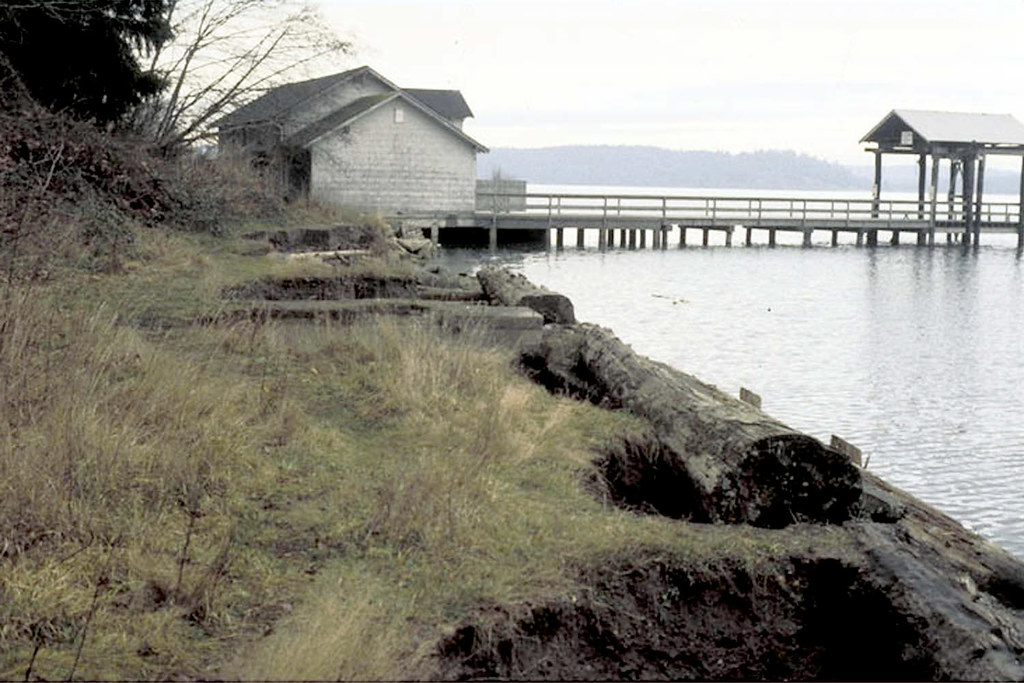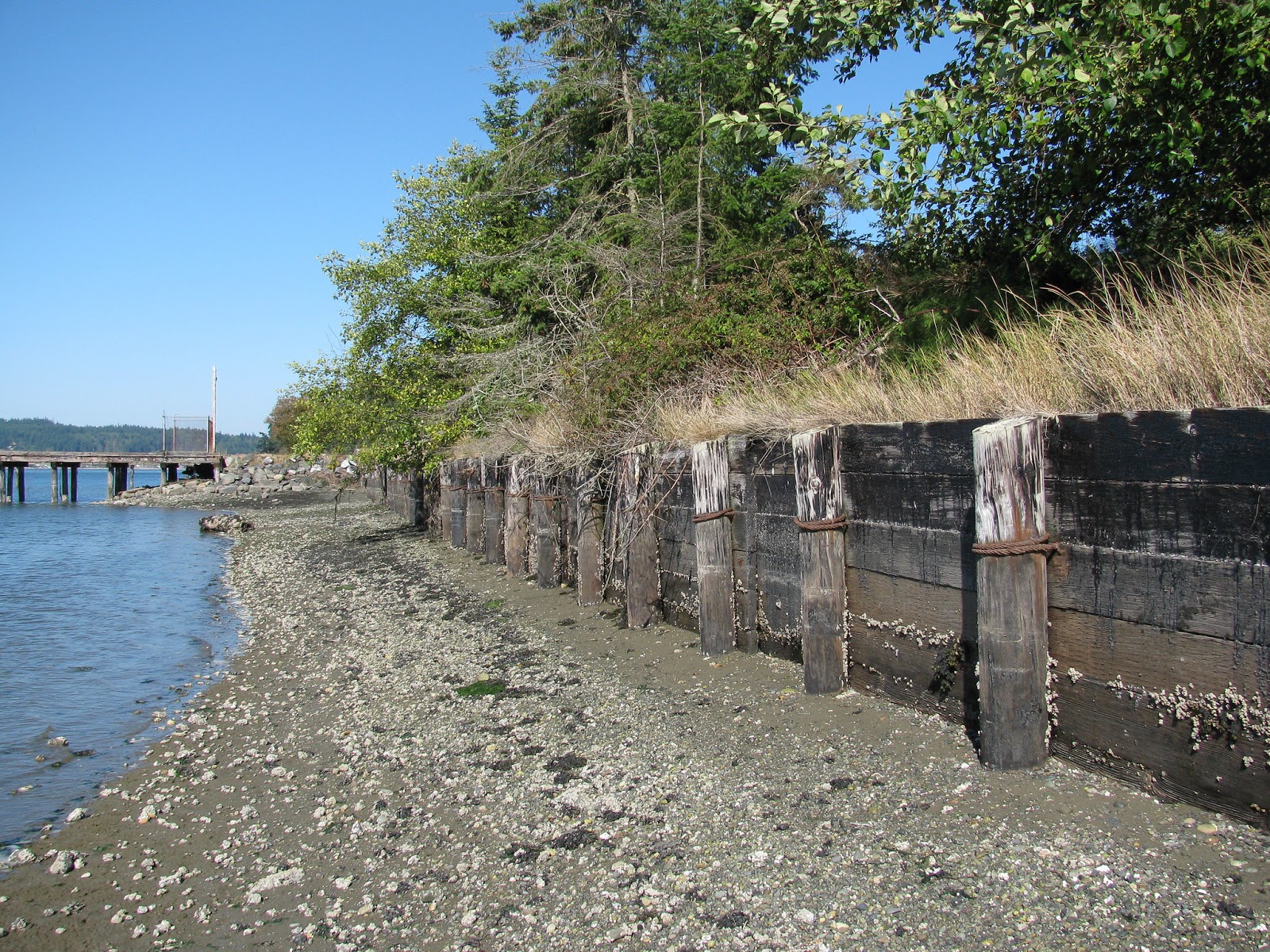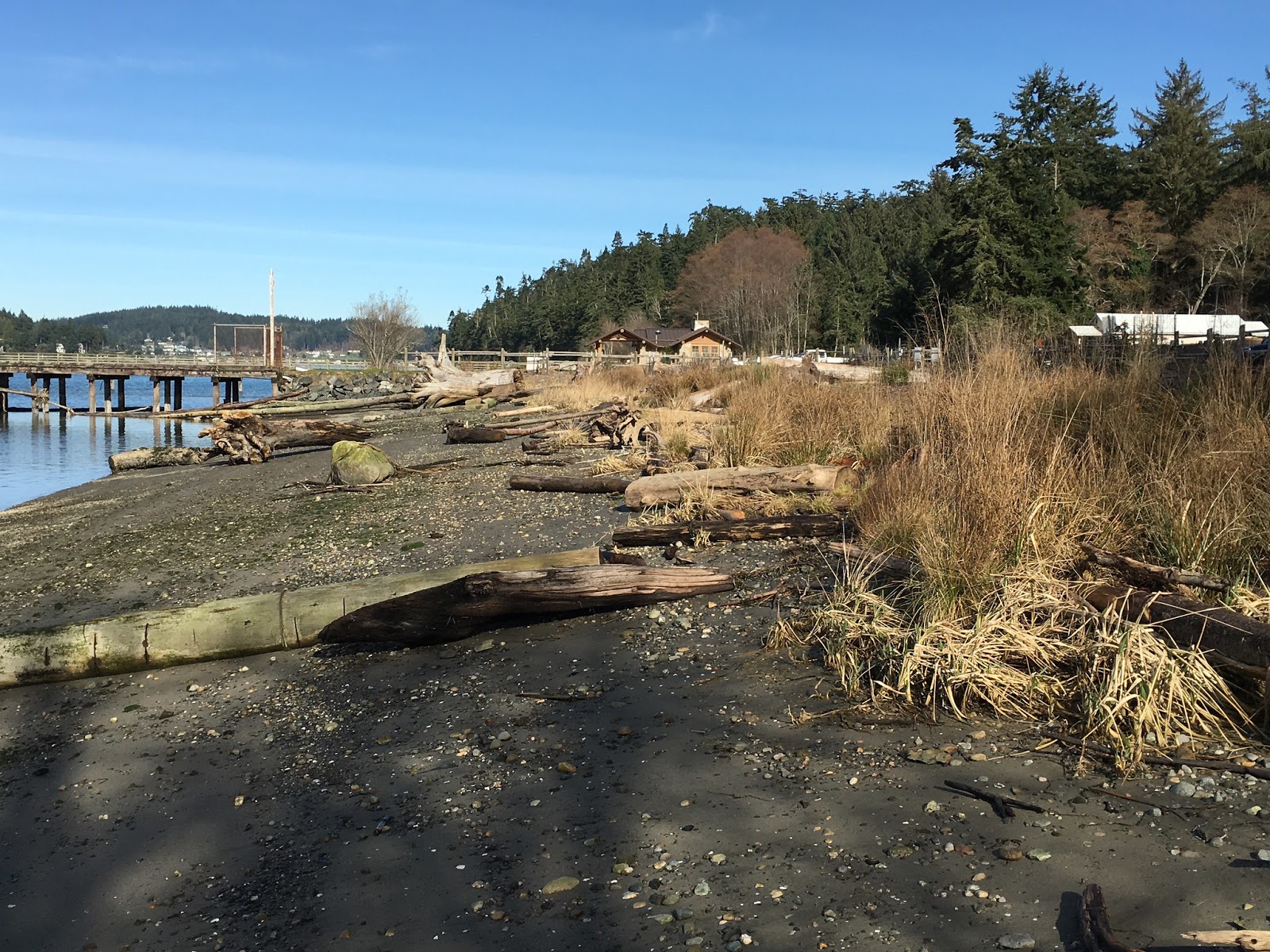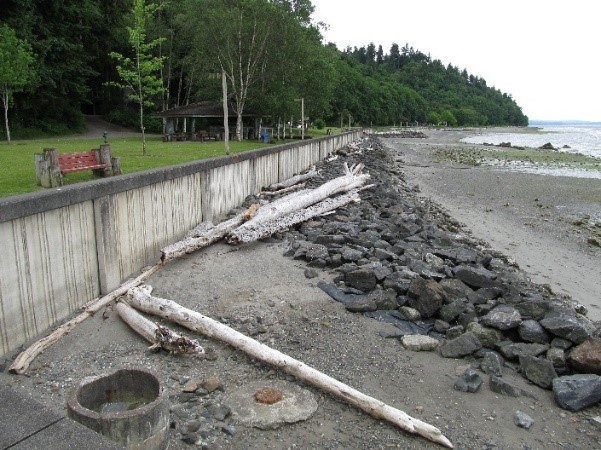Timber bulkhead at Luhr Beach along the Nisqually River delta in south Puget Sound. Photo courtesy Hugh Shipman.
We're pleased to announce we've created a new online tool showing examples of Puget Sound beaches where traditional “hard shoreline armoring” has been removed and more environmentally friendly solutions were installed.
Our new “Examples of Puget Sound Soft Shore and Armor Alternative Projects” application shows a map of Puget Sound with 29 different beachfront projects that have employed “soft” shoreline design techniques.
Users can view before-and-after photos of project sites, like the photos of Luhr Beach above and below, using the tool or by visiting our Flickr page.
Luhr Beach after log bulkhead removed and construction of new gravel beach. Photo courtesy Hugh Shipman.
The web tool is designed to spread the word about alternatives to hard armoring to homeowners, our local government partners, and anyone interested in the health of Puget Sound shorelines.
What is shoreline ‘armoring?’
Throughout Washington, shoreline property owners have often installed concrete bulkheads and rock revetments to help stabilize the shoreline, control erosion, and protect — or “hard armor” — coastal development.
Cornet Bay in Island County before removing bulkhead. Photo courtesy Hugh Shipman
Shoreline erosion occurs naturally in Puget Sound, the nation’s second largest marine estuary. Physical process such as winds, waves, storms, tides, and plate tectonics all work to constantly shape and reshape the Sound’s 2,600 miles of marine coastline.
The majority of Puget Sound shorelines experience low to moderate levels of erosion. However, about 700 miles of marine shoreline — 27 percent of the estuary’s entire coastline — currently has some type of hard armoring in place.
Most shoreline armoring was built decades before the state adopted tighter shoreline management regulations. Today, proposals for new armoring are carefully evaluated to determine if the structure is needed.
Big deal about bulkheads
While bulkheads and similar structures can reduce erosion and protect upland development from flooding, they can have serious consequences for coastal ecosystems and the long-term preservation of Puget Sound beaches.
Cornet Bay after bulkhead removed, shoreline regraded, beach nourished, backshore vegetation planted, and anchored wood placed on beach. Photo courtesy Hugh Shipman.
Historically, many armoring structures in Puget Sound were constructed far out onto the beach. This approach covered up backshore beach areas and disrupted shoreline ecosystem processes.
Beaches play an important role in the lives of forage fish, a key food source for salmon. Bulkheads and rock walls block forage fish from spawning on the beach, leaving fewer fish for salmon to eat. Endangered southern resident killer whales in Puget Sound eat salmon almost exclusively, so restoring forage fish spawning grounds has impacts across the ecosystem.
These structures also limit human uses of the beach. Concrete walls make it difficult to stroll down to the beach, and climbing over sharp and slippery rock revetments can be dangerous. At some places, water comes right up to the bulkhead during high tide, leaving no room for walking.
Encouraging ‘soft’ shorelines
Nowadays, there are a variety of techniques that can be employed to “soften” the shoreline by removing rigid walls and using materials naturally found on the beach. These techniques can reduce erosion while protecting ecosystem functions.
Seahurst Park in King County with bulkhead in place. Photo by Hugh Shipman.
At some sites, it can be as easy as simply removing the hard armoring and letting nature take its course.
Should a site need some erosion control measures, there are several options to mimic a natural beach. For example, fish-friendly sand and gravel can be placed on the beach — sometimes called beach nourishment — to provide extra material and elevate the shoreline.
Another approach is placing logs and woody debris on the shoreline to reduce wave energy and hold sediment on the beach. In some cases, the wood needs to be anchored in place.
The applicability of these techniques depends on the specific conditions and concerns of the site. More and more, these soft shore projects are being installed throughout the Puget Sound region.
Why softening the shoreline matters
Seahurst Park after bulkhead removed and historic fill excavated. Photo courtesy Hugh Shipman.
Removing hard structures from the beach and using more environmentally-friendly erosion control techniques allows Puget Sound shorelines to return to a more natural state. When natural erosion and sediment movement are allowed to occur, beach processes and habitats are restored. Once disconnected, the forested uplands and marine ecosystems can function again in harmony.
With fewer obstacles in the way, it’s easier for all beachgoers — fish, birds, and humans alike — to make use of Puget Sound’s treasured coast.
Give us your feedback!
Let us know what you think of our new tool. To provide feedback, please use this survey link.







